It’s easy to get trapped in the rabbit hole of chasing dB ratings, but as long as you’re within that “hearing safe” zone it isn’t usually the deciding factor. Simply put, shoot a handful of suppressors back-to-back and few people will choose the quietest one as their favorite one.
Between the Dead Air Sandman Ti, GEMTECH Tracker, and Yankee Hill Machine NITRO 30 seen here, volume level became but a footnote.
https://www.youtube.com/watch?v=Qaja5MfWCBk
A visit to Silencer Shop, which provides the easiest way to create trusts, buy cans, and even file Form 1s, netted me the Tracker and Nitro on loan. The Sandman Ti I own; it’s my go-to rifle silencer. Proceeding alphabetically . . .
Dead Air Sandman Ti:
Dead Air Armament makes four “Sandman” suppressors: the “L,” “S,” “K,” and “Ti.” They’re all .30 caliber cans, with all of them but mine using a QD mount system, a Stellite™ baffle core, and a stainless steel tube. All are rated for anything from .300 Win Mag on down without barrel length restrictions.
The Ti differs in its titanium tube and direct thread mount. Despite being the least popular Sandman in the line, I chose the Ti for a handful of reasons:
• I can move it from gun to gun without having to install a Dead Air Keymount Muzzle Brake first. If I were a “normal person” and owned a handful of rifles this would be a non-issue and I’d just “permanently” install a brake on each one. It’s less handy when rifles are coming in and out for review all the time and I want to quickly throw the Sandman on one.
• Better accuracy, or at least the perception of such. Modern manufacturing and innovative designs have led to QD suppressors that are absolutely not detrimental to a rifle’s accuracy, and I think Dead Air is one of the companies doing it really well, but I still wanted a direct thread can in part because they can provide better accuracy.
• Lighter weight. The Sandman Ti provides the sound reduction of the Sandman L but, thanks to the lack of a QD mount system, it’s both shorter and lighter (in fact, it’s almost 2 ounces lighter than the shorter “S”).
All Sandman suppressors have a replaceable front cap, which threads into the muzzle end of the can. A handy tool not only indexes into the little notches to torque the cap on and off but stores a cap inside of its base. Replaceable caps offer the ability to, well, replace what is the most commonly-damaged part of a suppressor as well as switch aperture sizes.
In the photo above, the front cap on the left is for .223/5.56 and the cap on the right is for .30 caliber cartridges. Dead Air also makes a 6.5 cap. While some folks insist this is a marketing gimmick designed to generate more revenue, Dead Air says swapping to the 5.56 cap when shooting 5.56 reduces first round pop and drops average volume readings by 1 to 3 dB.
While I haven’t tested that, I did throw my Sandman Ti into AR-15 Muzzle Brake Test #3, and swapping from the .30 cal cap to the .22 cal cap was good for an additional 3% reduction in recoil (from 43% to 46%).
My Sandman came in a nice box, in a nice baggie. Said baggie is made by Simpson, specialists in fire-retardant vehicle racing gear, and is indeed made of Nomex® brand red Nomex®™©.
Sandman Ti Stats:
Weight: 16.8 ounces
Length: 8.2 inches
Diameter: 1.5 inches
Materials: Stellite™ core, titanium tube
Finish: High Temperature Cerakote
Caliber Rating: Effectively anything .300 WM and smaller; no barrel length restrictions
Full-Auto Rated: Yes
Warranty: Lifetime
MSRP: $849 (~$699 on Silencer Shop)
GEMTECH’s new(ish) Tracker was apparently designed with mil/LEO snipers in mind, but just so happens to be awesome for hunters, precision shooters, and really anyone else not shooting rapidly. Its titanium and, predominately, aluminum build makes it one of the very lightest .30 caliber suppressors on the market. On my scale it clocked in at just 11.04 ounces.
While it’s still rated for use on guns chambered in up to .300 WM (24″ or longer barrel in that caliber), aluminum can’t handle the heat of more typical suppressor materials so it isn’t full-auto rated. In fact, it really shouldn’t get particularly hot at all and GEMTECH states that after 10 rounds of any caliber it should be allowed to cool down to ambient temperature before further shots are fired.
The Tracker is also a direct thread can. I know the threads are not aluminum, but exactly which parts of the Tracker are AL vs. Ti vs. potentially stainless steel (wouldn’t be a surprise if the thread insert was steel) I cannot say. The tube and the blast baffle would be likely candidates for titanium, though it’s possible one or both are aluminum as well.
At any rate, the Tracker’s minimal weight will help reduce point of impact shift, especially on thinner-profile hunting barrels, as compared to other .30 cal suppressors that often weigh fully twice as much. As the “ounces equal pounds and pounds equal pain” guys know, a uniquely lightweight suppressor will be appreciated in many hunting and shooting scenarios. On length, the Tracker is about average.
A very nice GEMTECH pouch is included with the Tracker. It’s definitely the most useful suppressor holster in this particular 3-can comparo.
Otherwise, though, the Tracker is a no-frills, very basic offering. No swappable caps, no mounting options, no length options, and firing pace-limited.
Oh, but it is also available in Realtree Camo.
In exchange for this no-frills simplicity — camo aside — GEMTECH’s $599 MSRP on the Tracker is extremely competitive.
Tracker stats:
Weight: a skosh over 11 ounces (GEMTECH says 11.3, my scale says 11.04)
Length: 7.9 inches
Diameter: 1.5 inches
Materials: aluminum, titanium
Finish: Hard coat anodized
Caliber Rating: .300 WM on 24″ or longer barrel. .308 Win on 16″+ bbl. .223/5.56 on 16″+ bbl. 300 BLK on 7.5″+ bbl.
Full-Auto Rated: No. Must allow suppressor to cool to ambient temperature after 10 rounds (all calibers).
Warranty: “If a Gemtech product breaks and it’s your fault, we’ll fix it for a fair price in a timely manner. If it’s our fault, we’ll fix it quickly at no charge.”
MSRP: $599 (significantly less on Silencer Shop)
Yankee Hill Machine NITRO 30:
More of a complete kit than just a suppressor, the YHM NITRO 30 comes with the can, of course, but also a plastic carry case filled with two .30 cal muzzle caps (one flat, one a muzzle brake), two rear caps (one direct thread, one QD mount), one QD muzzle brake in one of three thread pitches, a Basofil® heat-resistant pouch, and two assembly wrenches.
Other front caps, direct thread mounts, and muzzle devices are available separately. Some of those optional items appear in the photo above, such as a .22 cal (for .223/5.56) aperture front cap, a 1/2-28 direct thread mount, and the center section of YHM’s “Adaptable Brake Assembly.”
YHM’s QD mount is simple, quick, and effective. A couple of coarse threads have the suppressor tight in nary a complete revolution, while support at the front and rear of the muzzle device ensures proper alignment. A spring-loaded collar at the base locks the suppressor to the gun, while also allowing very simple and fast removal — though it does take two hands if you’ve tightened fully.
The NITRO 30’s length can vary depending on your chosen configuration, but in all configs it’s the shortest can here. Due to its all-stainless steel construction, though, it’s also the heaviest. Individual weights for each component are listed below.
NITRO 30 stats:
Weight: Suppressor with no front cap or mount: 13.72 oz. Flat front cap: 1.55 oz. Brake front cap: 2.89 oz. QD mount: 2.96 oz. Direct thread 5/8-24 mount: 3.175 oz. Direct thread 1/2-28 mount: 3.53 oz. (Lightest configuration — if you include few ounces for the QD brake — is flat front cap and 5/8-24 mount for a total of 18.45 ounces)
Length: 6.93 inches to 7.75 inches
Diameter: 1.562 inches
Materials: 17-4 Ph stainless steel
Finish: Cerakote
Caliber Rating: Up to .300 RUM/.300 WM on 20″ or longer barrel with QD brake or flash hider. .308 on 10.5″+ bbl with brake, 16″+ bbl with FH. 5.56/6.8/7.62×39 on 10.5″+ bbl with brake, 16″+ bbl with FH. 300 BLK on 8″+ bbl with brake, 16″+ bbl with FH.
Full-Auto Rated: Yes
Warranty: Lifetime
MSRP: $890 (~$699 on Silencer Shop)
On The Range:

On the 16″ barrel of the bolt-action CZ 557 Urban Counter-Sniper, chambered in .308, all three cans looked at home. The lighter weight of the Tracker was noticeable when shooting offhand, but didn’t matter off a bipod or rest.
The Sandman and NITRO sounded similar to me — I was surprised the shorter suppressor wasn’t obviously louder. They both have a pleasant tone that’s solid, but with some noticeable higher-pitched PSSSHHH.
GEMTECH’s Tracker sounded louder on the short barrel .308, but also deeper in tone. It had more of a resonant, deeper whump to it and less of the high pitched sound. Normally this would be perceived as being quieter overall, but the volume difference between it and the other cans on this rifle was just enough to be confident of a difference. On a 20″ .308 it’s still comfortably hearing safe (rated 134 dB in that config), so may well still be the best choice for a rifle that’s going to be carried around.
After an initial five rounds, the Tracker was the coolest customer. While aluminum can’t handle as much heat, it does disperse it significantly faster. The Tracker didn’t end up as hot as the other two cans and also cooled off quickest.
If you’re watching the video, make sure to listen for echo off the canyon walls and other after-the-gunshot echoing noises to get the best possible — as video goes — idea of how they compare. There’s certainly a lot missing as compared to being there in person, but in general I think it’s a decent surrogate.
Switching over to a 300 Blackout SBR build with an 8.3″ barrel, I fired both subsonic and supersonic ammo through each can.
In this case, I actually preferred the sound of the Tracker. While on paper it’s louder than the others, its low tone and low blowback seemed quieter — or at least the most pleasant — to my ear.
Though GEMTECH makes its rate-of-fire restriction readily apparent, I’d personally run this on subsonic 300 BLK at normal rates of fire without concern. Even on the short barrel, dumping 10 rounds downrange didn’t get the Tracker too hot to touch, and it cooled off incredibly fast.
Over to the NITRO 30.
With subs, it was the least quiet (again, this is subjective rather than measured) of the bunch but only by a hair. This could also be due to the fact that it had the most blowback. On an AR-15, this is highly likely to translate into increased sound level through the action and ejection port. Which means louder at the shooter’s ear. It was good for enough backpressure to send a jet of gas into my right cheek via the charging handle gap on every shot.
To be fair, when I built this upper I had tuned the Odin Works adjustable gas block (which is great, btw) with the Sandman in place. I could probably dial it down a click or two for the NITRO.
While the short NITRO 30 looked the best with less of it hanging out of the handguard, the featherweight Tracker definitely felt the best.
The Winner:
I can’t do it! As much as I hate comparisons that don’t include a winner, these three suppressors are so different from each other that it’s really all about what you plan on doing with them.
The Sandman Ti provides maximum dB reduction in a fairly lightweight can that will handle whatever you throw at it. It’s full-auto rated without barrel length restrictions, sports flawless machining and finish, and gives me the ability to thread it onto basically anything, sending a .30 caliber or smaller diameter projectile downrange.
The Tracker is more of a niche item due to its restriction on firing pace. It rewards, though, with its extremely light weight and its lower price point. I’d absolutely consider building a 300 Blackout for hunting, home defense or fun use around this can. With hearing safe (often by a large margin) ratings for the majority of popular hunting cartridges in typical hunting barrel lengths, it’s a great choice there, too.
If versatility and adaptability are high on the list, the NITRO 30 delivers in spades.
It has the highest MSRP here (same retail price as the Sandman Ti on Silencer Shop), but it comes with a lot of kit. Moving between QD mounts, direct thread mounts and various muzzle caps is pretty slick. In machining and finish it’s a touch rougher around the edges than the other two, but it’s a tool and it gets the job done and done well.
Bottom line? All three of these suppressors show different aspects of some of the innovation we’ve seen in the market over the last few years. Any one of them is the right one.

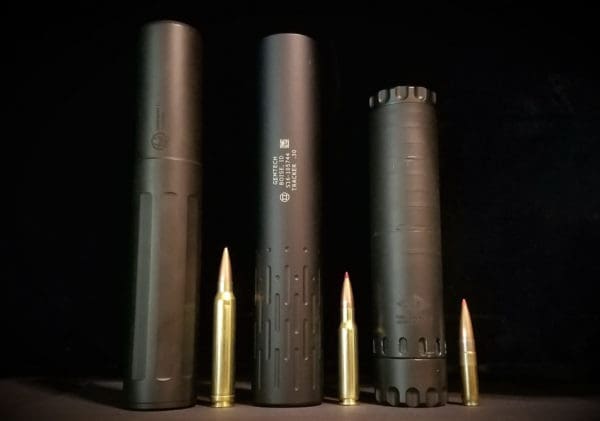
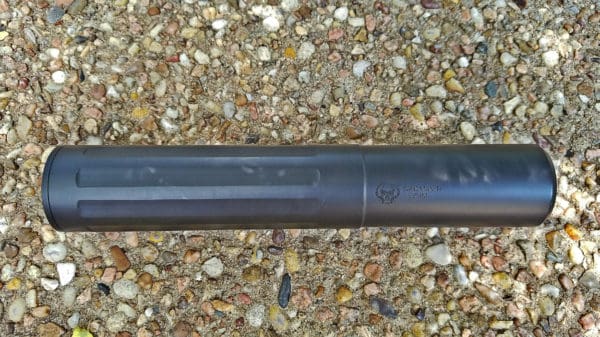
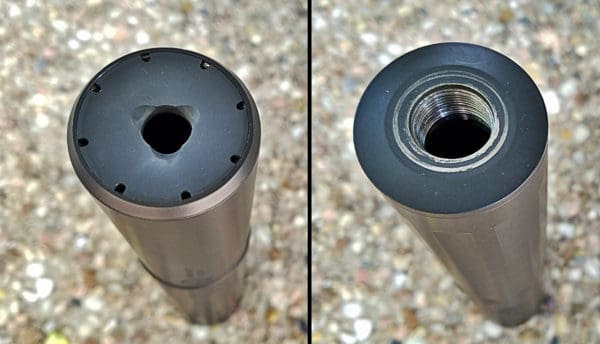
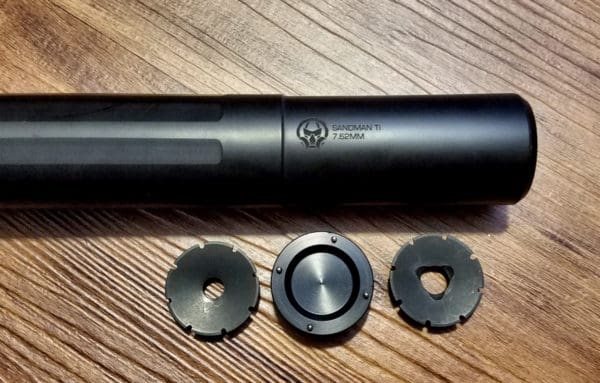
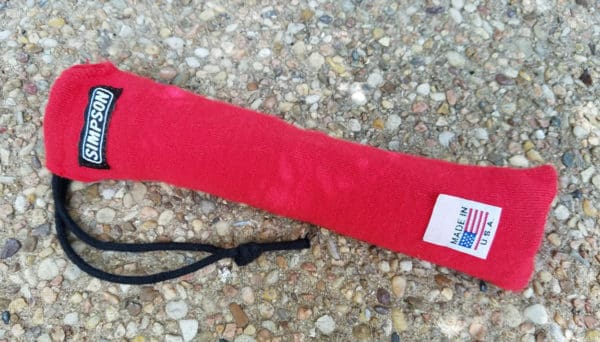
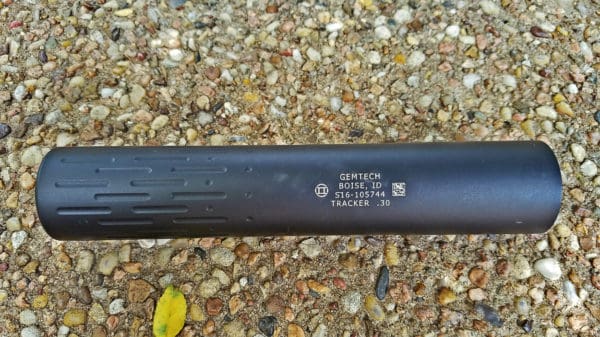
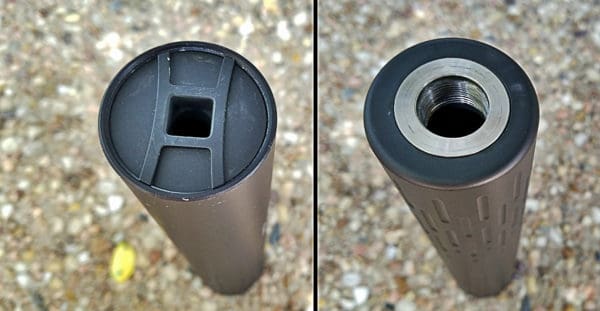
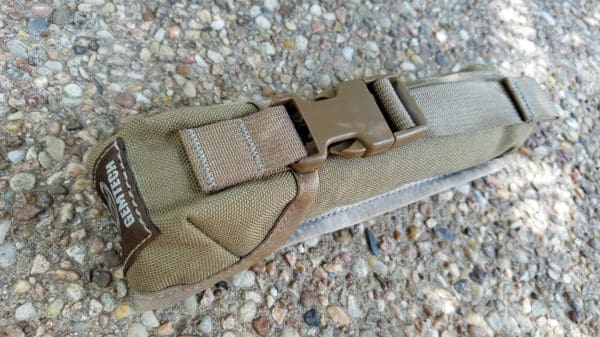
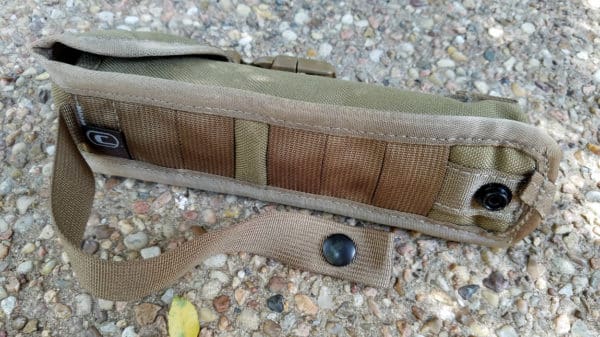



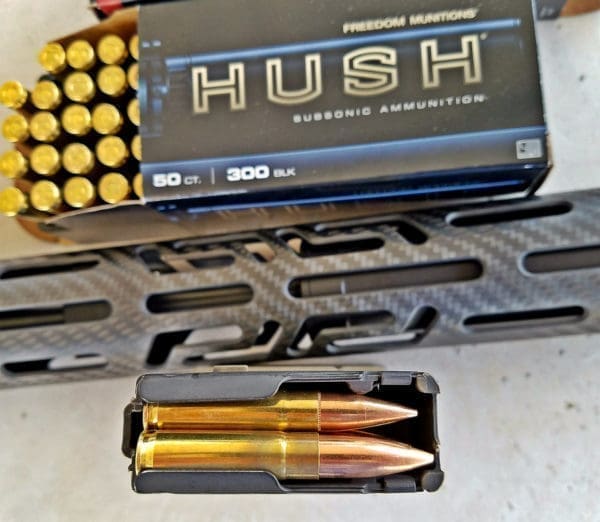


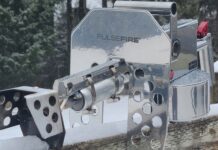
All these three cans defiantly suppress the sound. Far cry from silence it as the Lib critics claim.
Let those who oppose cans being made easier for the masses to obtain. All hear for themselves.
This isn’t the movies and TV.
They suppress sound. Not stop it.
On the 16″ .308 the quietest one was probably barely under 140 dB. That’s unlikely to cause hearing damage, but just barely. It’s still not just loud, but LOUD (look up a dB level comparison chart to see how this is louder than a jackhammer and closer to a jet airplane). It ain’t Hollywood, that’s for sure.
Gemtech’s pouch pushes it to the front of that bunch for me. I hate throwing my cans in my range bag covered in a some thin, dinky layer of fabric (Deadman’s pouch is a novel idea though). My Obsidian 45 didn’t even come with anything (supposed to use the box, right…)! Nice pouches aren’t cheap either.
“Replaceable caps offer the ability to, well, replace what is the most commonly-damaged part of a suppressor as well as switch aperture sizes.”
The ATF doesn’t consider those to be ‘silencer parts’?
Do they provide documentation on that?
ATF provides exemptions for various specific parts, which is how so many companies currently have swappable mounts, swappable end caps, and even configurable suppressors where the end user can change the suppressor length (e.g. Dead Air Ghost-M, Rugged Oculus, Q Erector, etc.).
Doing things such as making muzzle devices that utilize the same QD mounting system as the suppressor (see Dead Air Pyro and the YHM Adaptable Brake Assembly) is, I believe, one way to help get approval for having those parts exempted from being “silencer parts,” which would mean only an SOT can replace them.
Ooooh. I’m torn between the Ti and the Tracker, for different reasons. This was a good review.
I can do it.
YHM
Sounds like you and Warren (the comment above yours) have some debating to do haha
Comments are closed.